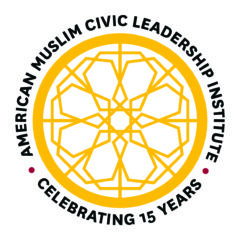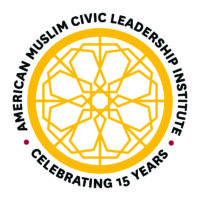What needs were you seeking to address with AMCLI?
Brie: Nadia and I met through a project at the USC Center for Religion and Civic Culture about congregations that were successfully connecting with Twentysomethings. We were both hired as independent researchers on the project. I decided that we were going to become friends and she eventually bought into that plan. The project resulted in a chapter called “Congregations that Get It” in the book Passing on the Faith: Transforming Traditions for the Next Generation of Jews, Christians and Muslims.
In talking to young people about their congregations, and young Muslims about their identities, we heard a lot of hurt. There was a lot of alienation. People felt like they didn’t have a spiritual home, and they were being pressured and pressed.
It was a few years after September 11th and in the wake of the Bush administration’s first term, moving into the second term. It was a really tough environment to be in for a lot of young Muslim leaders, especially those who were working in organizations that were fairly new. There was a deeply felt sense of pain.
I joined the staff of CRCC in, I think, September 2004. Then, CRCC started the Passing The Mantle program with the Rev. Dr. Cecil L. Murray in order to help the next generation of Black Church leaders embrace the important social and economic roles that their congregations could play in their community. At CRCC, we were thinking about how you build capacity for people to live their life’s missions in ways that are sustainable.
From my experience with the Jewish community, I knew there’s a whole infrastructure to support leadership and institutions and innovation and tradition. And I think for us, all of those things coalesced.
Then, there was this moment when a mutual friend of ours, Edina Lekovic, came home from working at the Muslim Public Affairs Council and just collapsed in exhaustion and burnout and sadness and desperation and just needing a break. A few friends, including Nadia and myself, had gathered at Edina’s house before going to dinner. We looked at each other and thought, this doesn’t need to be like this.
Edina wasn’t unique: It was a story repeated over and over and over again.
To use up leadership in this way and use up that potential is a choice. It might be a choice being made passively, but it is actually a set of choices, and we can make different choices. We can put our energy into doing something so that it didn’t suck to be a young Muslim leader in an organization, and you didn’t have to see every moment of your time sucked up into these firefights and every amount of energy exhausted to do things that were like climbing up a sand hill.
Edina calls herself AMCLI’s patient zero, because we were really in many ways solving for the type of pain that we had witnessed that she was going through.
Nadia: I’ll just add that at that time, there were a lot of new organizations starting and a recognition that there needed to be new voices. So you had this generation that had been catapulted into leadership, but nobody had actually invested in training them to be in those roles.
I remember when we went into the Jewish and Christian communities and saw the infrastructure that was there and saw how they were supported and nurtured and moved through stages rather than just put in a limelight and expected to both defend the community externally and also lead internally with no support.
It seemed like there were models out there of what it looked like to build a more empowered, resilient capacity of this leadership. It didn’t seem like rocket science to build that, but it did seem like there was a vacuum for us in which to do that. And especially after hearing all those stories, it felt unethical or strange to just be like, “Thanks for sharing. Sorry you’re sitting in all that pain.”
It felt like we had to do something to respond to that gap.
Brie: And you have to remember the era of this is pre-social media. People were not talking a lot about developing networks of support. So it was not easy for people to build community; it was not easy for people to be visible to each other. There was a tremendous sense, not just of the burnout and despair, but also of isolation.
I think the isolation was the biggest thing that we could help solve–to give people a sense that you are not alone; it is not all on you. There are other people. We met so many incredible people who were really good at what they were doing or with the potential to be great at what they were doing. And they were invisible to each other.
Along with Edina and Sumaya Abubaker, who would become program manager of AMCLI, you two hosted 22 civic leaders from diverse American Muslim communities for a meeting in 2006. What were the goals of that initial meeting?
Nadia: We knew there were needs to be addressed, but we didn’t know exactly what we were designing. We didn’t know if this was a book project, a collection of stories or a speaker’s bureau. But the one thing we did know was that the way in which American Muslim leaders were being convened wasn’t responding to the community’s actual needs. We didn’t see this community being convened by and of itself.
We wanted to change that dynamic–to bring people together without a set agenda to talk about what the needs were in a neutral place. So that was the drive to host the first meeting in 2006.
The Rockefeller Brothers Fund Pocantico Conference Center in New York allowed us to use their space.
We flipped the script a little bit and said, “There is no organizing body for this group.” I think it was important to shift the dynamic so that the group coming together wasn’t reacting to somebody else’s agenda, but could actually articulate the needs that the group wanted for itself, and then talk through how we would get there.
When we sent out the first round of invitations, I was thinking, “Is anyone going to say yes?” I am not a person of religious leadership in the community, and Brie is new to the Muslim community. So they didn’t necessarily know who we were, except for Edina.
Brie: Edina had the social capital. She was one of the very few figures that were visible nationally and connected to a Muslim organization. But I’m not even Muslim. I was like, “Are they going to accept me in this space? Or will it be an intrusion?”
Nadia: And then, people started to say, “Yes.”
We thought, “We really are responding to a need.”
Brie: Everybody was hungry. They were just hungry for the space as Nadia was talking about it, which was a space where they were able to talk openly and freely about what they wished that they had had up until that moment and what they wished they could have the next day. And what they wished for the people who were coming after them.
It was an incredible conversation. And what came out of it after that weekend were—one, some really great friendships—but also three areas that were identified. First, Muslims were getting kind of overrun in the media, and there was no way for media folks to find the people really doing the work because they were always too busy, and the ones who were raising their hands to catch the media’s attention didn’t have their hands busy doing the work. So they were getting misrepresented by opportunists in the media. Second, there was no philanthropic infrastructure to support Muslim communities. And, third, there was no leadership pipeline or way to invest in Muslim leaders over the long term.
And what’s happened now is that on all three of those challenges, there has been a lot of movement. In the last 15 years, there’s been a tremendous amount of Muslim engagement around the media. There’s been all sorts of philanthropic endeavors related to it, both in non-Muslim philanthropy and in Muslim philanthropy—mostly run by AMCLI fellows. And then we’ve been doing AMCLI since 2008.

